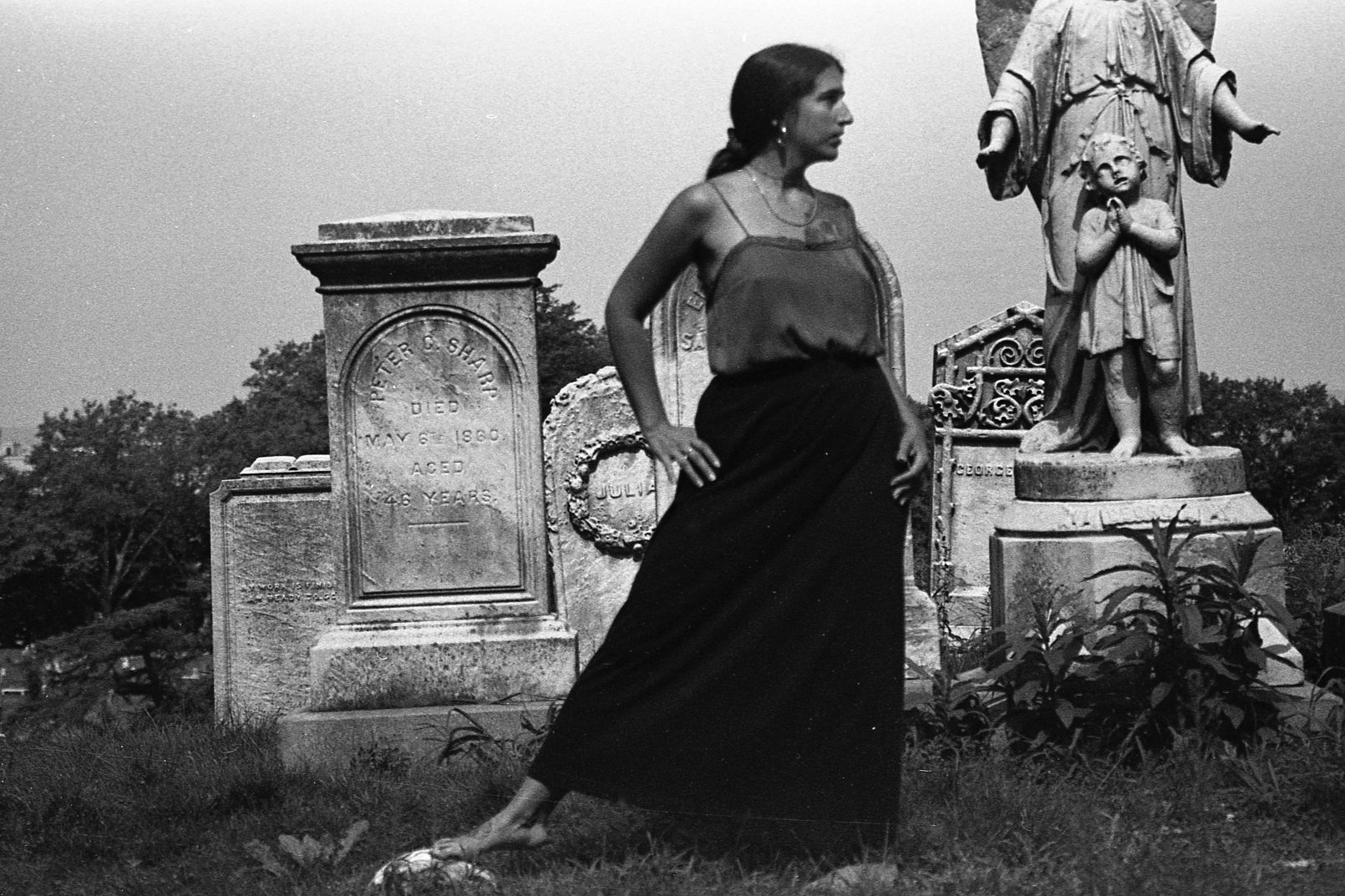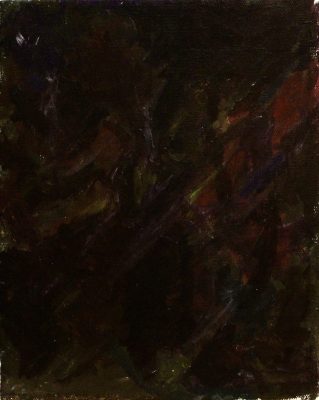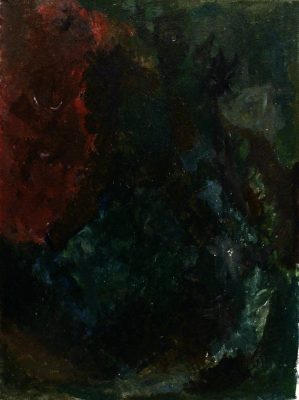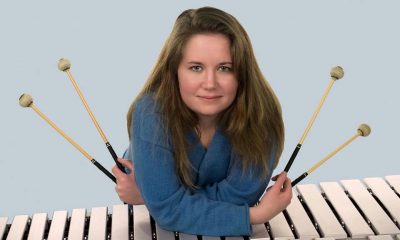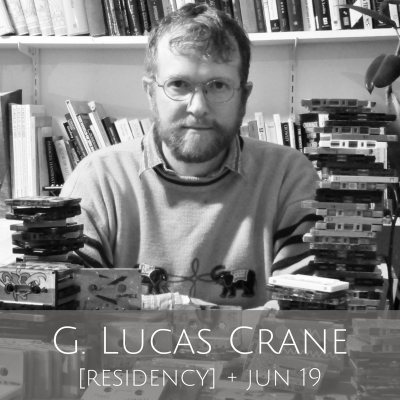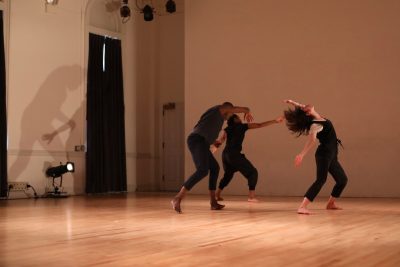
The prayer is the physicalization of an intention to have something to revisit every morning. Both building upon and executing over and over as it becomes part of the musculature of the body, it becomes a semi-automatic experience. A sequence of movements that can be done in small spaces and large depending on location. From this prayer or movement sequence we amplify it in our own ways. — Oren Barnoy
On February 5-7, 2020, Roulette will present New York-based choreographer and dancer Oren Barnoy’s newest work, future erasure. After a rehearsal in the final days of 2019, the three dancers for whom Barnoy created future erasure joined him in conversation with Roulette Director of Communications Caitlin Gleason to discuss working collaboratively, embodiment and individual expression, and the role of sound in the piece.
Caitlin Gleason: Tell me about the piece you are presenting in February at Roulette.
Oren Barnoy: We have been working on it for at least three years. The priority has always been the creation of movement and material, which is difficult to do in New York because of the lack of resources to rehearse. Additionally, it takes a while to make material that doesn’t reference ballet or other modern forms [of dance] because of the training that resides in our bodies. In my work, I recognize how the past lives in our bodies. I try to figure out what to embrace and what movements have an ideal ideology and which ones I don’t exactly feel as in line with. That work has been a dialogue between us. In the case of this show, it’s a little bit different because we’ve been working for a little while, so now I feel like we’re crafting it, working on the compositional elements of it a little more.
CG: What is the role of sound and music in this piece?
OB: I’m excited to work with [sound designer James Lo] because he is who he is, and also because he’s not me [laughter] and can offer a different perspective. I’m not going to be thinking of what sounds right, I’m coming from a place of an urban kind of soulful house music, hip hop sounds, and so on. James has his history and his life and his music and his interests, and so far it seems like what’s happening is I’m able to see the material more with the sounds that he’s making. We’re asking the same questions. What is this sound doing and why?
And the work is that question. James mentioned that a lot of that work consists of trying to see the movement as it really is and trying to imagine the different ways that the movement could be seen.
Paul Hamilton: That really resonates– just based on how we first started working with the material…when we did it at Gibney and we had house music and we started off with the prayer. Which was, for me, kind of a weird house flashback because back in the day when you would go dancing with friends you would say, we’re going to go to church, you know?
And so we started off with this stepping idea about the prayer and the house music, but now, as the piece continues, the music and movement have evolved, but far more interesting is how the movement is executed and how it lives in my body differently based on the different soundscapes that it exists in. It’s been really interesting to see what James has brought in and how it has affected the movement. It has reshaped and reformed, or been reborn in my body. The soundscape is very different.
CG: Oren, you mentioned that this work is more of a collaboration, rather than a choreographed piece for a group of dancers. How so?
OB: That’s right. Although, I don’t think it’s a historically-defined collaboration. It’s not a standard choreographer-to-dancer relationship either. It’s not a collaboration but it is people coming together to make a work.
Candace Tabbs: Oren, you’ve used the word “practitioner” before, like we are practitioners in this work, and I think that speaks to how we exist in the making of it. That it’s about how the movement is starting to live in our bodies. This kind of kneading it, like dough, letting it settle and then thinking of how we can expand it and stretch it to see what opens up and what evolves in the movement and the different shared phrases that we have in our group. Like the prayer, it’s kind of common ground where we explore. So “practitioners” kind of always stuck for me.
Molly Lieber: Yeah because there is really detailed movement work happening. I wasn’t with Oren and Paul when this movement started, we [Candace and Molly] came in a little bit later. As a group we started really pulling apart movements and found if you stretch apart something, you can see it in a different way and get different things out of it. That’s what I feel like we do. The movement has been really stretched out so you could extract it and you can change it. I feel like there’s a vocabulary that we all understand and practice.
CG: That’s interesting too. I’m thinking about the relationship to music and scores and how that kind of functions in the same way.
PH: Yeah, I mean, all of us work with choreographers and I think all of us work in situations where we are in collaboration with choreographers. But there is something about the intimate nature of the style of this movement or the fracturing of the prayer in each person’s body because we’re kind of taking a source material and all doing it in our own way, which then kind of personalizes it in a very particular way. It gives us each a certain amount of agency over how we are interpreting the movement. There is of ownership over your own interpretation what you’re doing.
OB: When you say ownership, that’s so clear. That material is really that person’s material.
PH: And it would look very different if someone else was doing it and it would then become theirs.
OB: When you look at them you can see that they’re the same movements. But that is the work we’re doing, the movement becomes embodied differently in each dancer because we’re trying to amplify it and amplifying it means something slightly different for each person. Each person it expresses the movement a little differently but it’s the same. It’s an expression of them. We’re dancing from all sides.
I personally think that if the dancer has the interest or the willingness and the space inside to express themselves, that they’ll feel empowered and then hopefully as a group we would feel empowered, and that’s ideal. It’s part of my plan to find ways to express empowerment.
CG: In the winter of 2019, you presented work as part of Roulette’s New Movement Series, organized by Molly and Eleanor Smith. Did future erasure grow out of that work? Are they related?
OB: It’s a clear continuation.
CG: In what way? What elements are moving forward?
OB: The material itself. We are developing some new core physical movement material and there’s some material from the work’s previous iteration that is part of it. Often, I think that performances do not necessarily happen exactly when you’ve finished the piece. So at this point, it doesn’t feel like a finishing. It feels like such an infinite kind of experience and that last year’s work and February’s performance are one whole piece.
CG: Do you have any non-dance influences such as text, music, or artists that contribute to your process?
ML: Honestly, a lot of conversation in the room influences what’s happening. I feel like that’s something that’s hard to grasp in a performance, but I do feel like the whole nature of the vocabulary of the work, like saying again, it came from a shared vocabulary of open steps. Everybody knows each step, but then what’s shown is a version of those steps that comes from stretching it out and finding something that each person’s body can relate to. I think when you’re seeing it in performance, you’re seeing something that is hard to grasp. A lot of times people have seen this work and said to me “oh were you improvising the whole time?” No, each person knows what they’re doing the entire time. But it has the feel of improvisation, where you are doing something that’s a little hard to grasp. Yet we’re getting somewhere, and the fact that we’ve been doing it for so long and it’s still hard to grasp, speaks to the intrinsic nature of this vocabulary.
I think another influence is what we’ve been talking about in the room because there is community when you meet with the same people over a period of time – I’ve gone from being pregnant to having a two-year-old, Candace has gone through her journey, Paul has gone through his, and Oren has gone through his. I think that all shows up in the performance.
CG: I like that very much.
PH: I feel like the first time we presented this work, the title was a group of lines, a symbol.*
OB: Yes, it’s a big difference.
PH: Not that I’m holding on to that but in a way, for me, the symbol represented a lot of the inner-outer workings of the piece and in some sense represents how I feel about the matriarchal work in that it’s constantly moving, constantly overlapping, folding in on itself, opening out. I know we’ve gone on and different elements are being introduced, but I still do see the symbol as a frame. It’s like an eight-headed monster. There’s so much going on, there’s a space, then that, then this, then bodies moving in, and out and down and up. That’s my experience in it.
CG: I think that’s interesting that you bring up the symbol and then thinking about this transition to a written title. It seems like it follows the evolution of the piece.
PH: Yes. A symbol moving into words.
CG: Could you talk about working at Roulette? Is there anything that stands out about working in that space?
OB: There’s just a nice feeling about it overall. I feel a sense of freedom there and also the sound quality is so amazing. It feels like at Roulette you can blast it if you want, you can really feel the bass. I love that – I love the sound. And working with everybody there is really cool and they work with you to support your vision. It seems to be really about the work, zero drama.
PH: We’re excited. When I found out this was happening I was like, that’s really awesome. Roulette, Brooklyn, exciting space and we have a history of working there and I feel very good about presenting work there.
OB: I also like that it’s different than Danspace Project or similar historically dance-presenting spaces. Roulette has a different history. It’s an honor to show your work at a space that started out as a platform for avant-garde music and has expanded. It feels a little different than working in a purely dance-based space, in a good way! We’re excited.
*In May 2019, Oren Barnoy presented 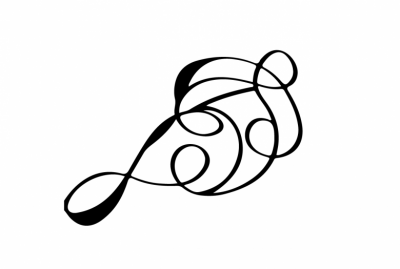 at Roulette. Titled with a symbol, the piece was performed by Barnoy along with Hamilton, Lieber, and Tabbs.
at Roulette. Titled with a symbol, the piece was performed by Barnoy along with Hamilton, Lieber, and Tabbs.

